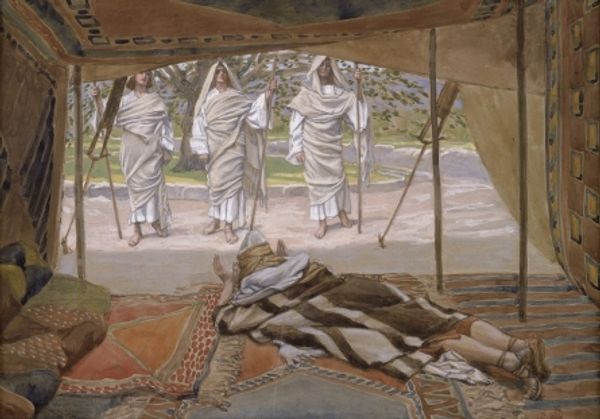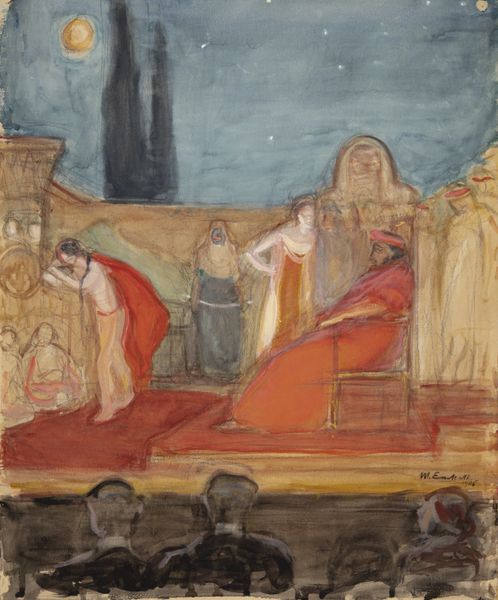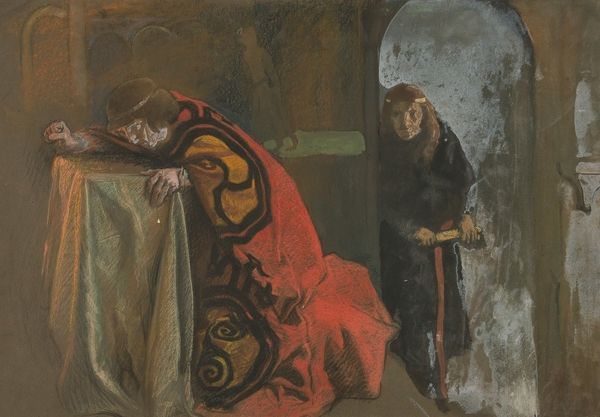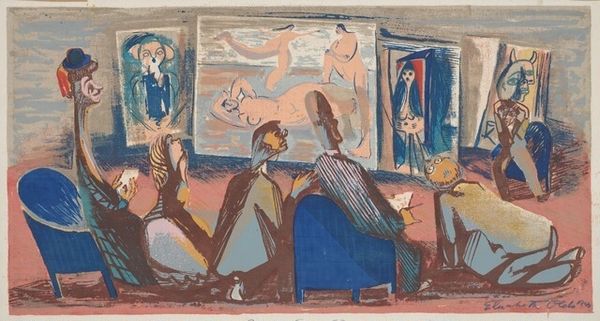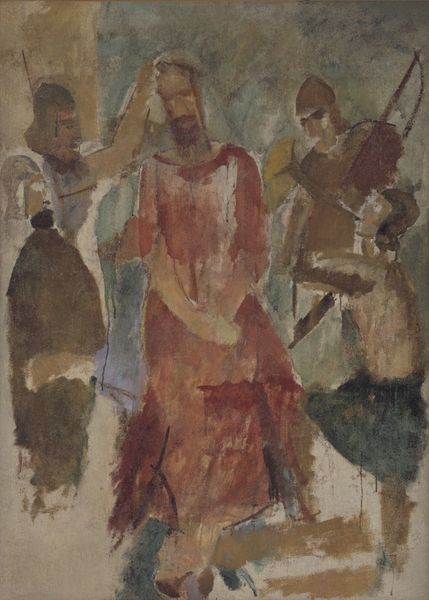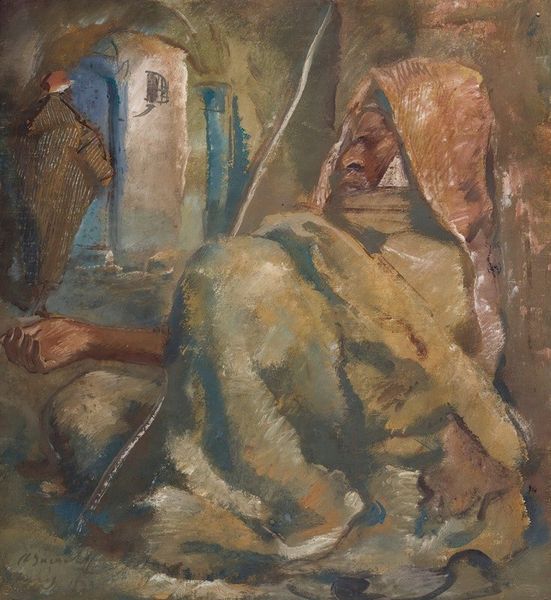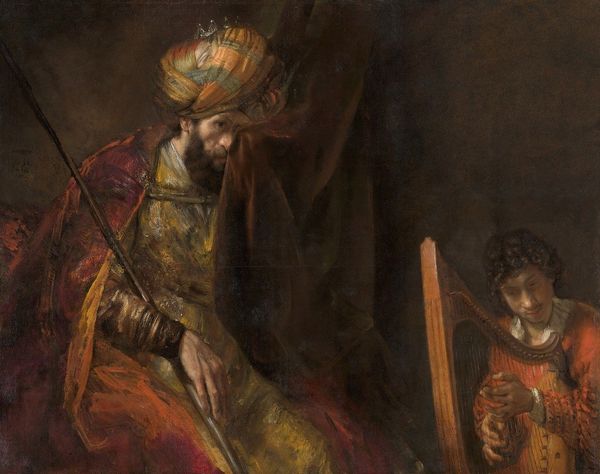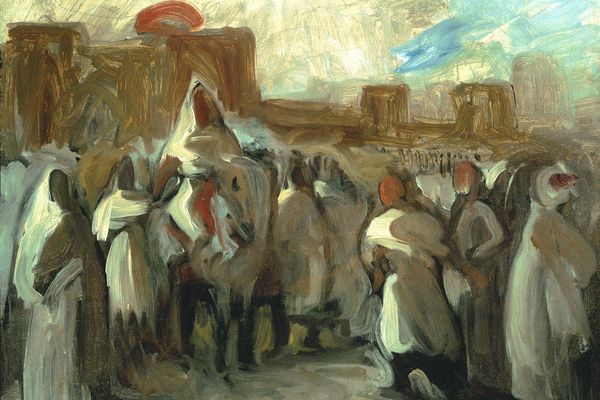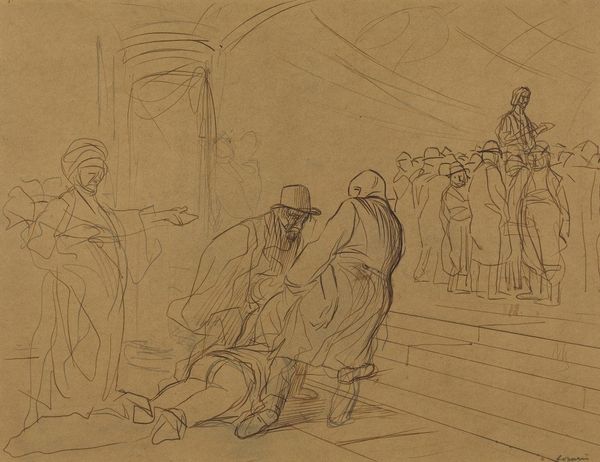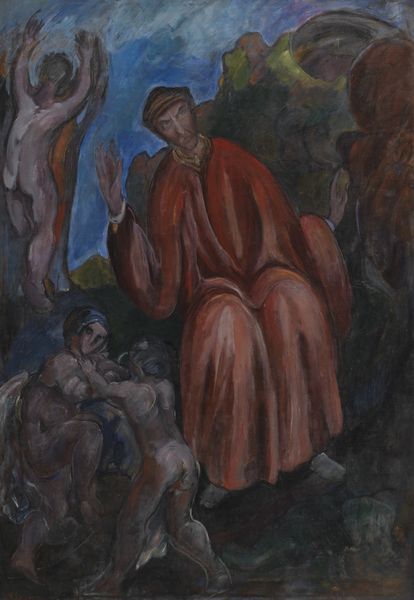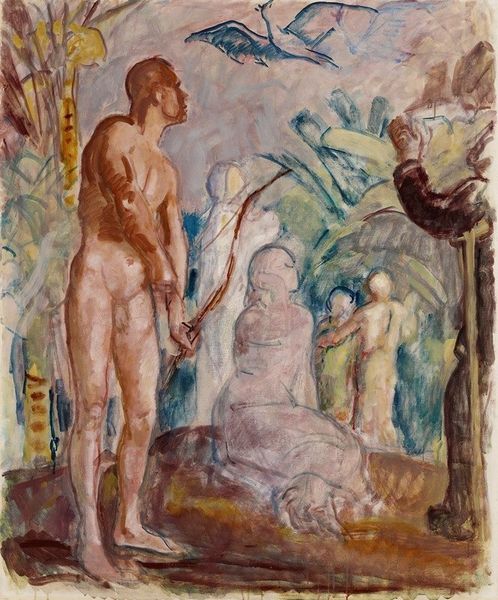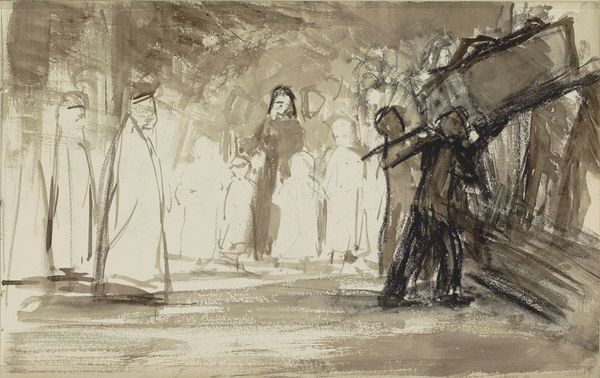
Copyright: Public Domain: Artvee
James Tissot made this watercolor, "Sarah Hears and Laughs," during the latter part of the 19th century. Tissot has adopted a distinctive, rapid application of the watercolor medium to paper. Note how the tent’s fabric is not just a flat plane, but a series of lively, vertical stripes. Observe also the tent’s interior; it’s richly textured, almost tactile. The artist has carefully built up the surface with multiple layers of translucent washes to suggest the play of light on the fabric, and the figures. By drawing attention to the materials of this ancient scene, Tissot seems to be making a statement about cultural production. He’s less interested in the historical narrative, and more so in the artistry behind the textiles. Through the tent’s colors and textures, Tissot bridges the gap between fine art and artisanal craft, reminding us of the skilled labor involved in both. The artwork subtly elevates craftsmanship, and encourages us to see its intrinsic value within a biblical tableau.
Comments
No comments
Be the first to comment and join the conversation on the ultimate creative platform.

